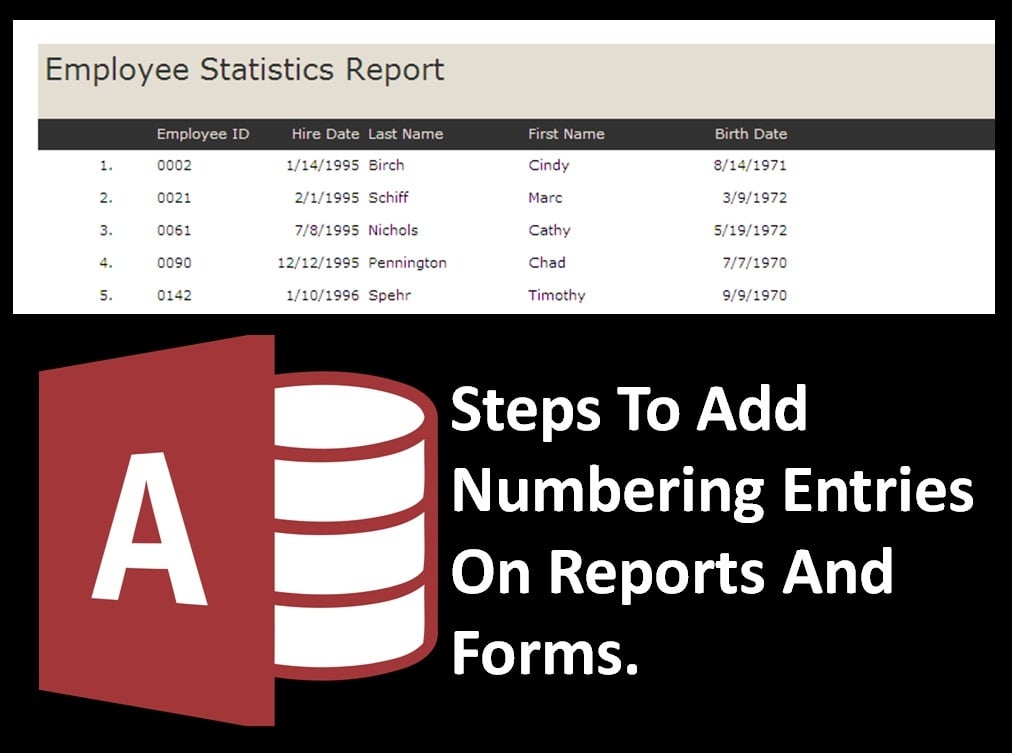Numbering is one of the easiest ways of organizing data and in this article we apply the concept to on Access Forms and Reports
Numbering or ranking data plays an important role in keeping records sorted and organized. And people often prefer arranging their Access reports and forms with numbering entries to gain an easy access to a particular subject. Numbering entries also come in handy if the user is looking for a particular range data. These steps can be used by casual as well as professional users with ease.
How to Insert Number entries in Reports and Forms?
Report
Access offers a simple sorted way for numbering records on a report. This method works regardless of how the report is being filtered or sorted.
Step 1: The user needs to open his/her report in the Design View:
Step 2: Use Toolbox (for Access 1 – 2003) or Design Ribbon Control group (in Access 2007 & later), to insert a text box in the record for displaying the list of numbers.
Step 3: Now the user needs to select a text box and set the following properties in the Properties Window:
Control Source =1 Running SumOver Group
As soon as the user will apply these changes the text box will be automatically incremented on each record.
Form

In the relational database theory, records in tables are not designed for following any physical order, so here record number represents false categorization and thinking. Instead of using record numbers, Access uses Bookmarks in a recordset or Primary Keys of a table to number the data.
In Access 97 or its later version users can use the CurrentRecord property of the form, by inserting a text box with the following expression in the property of its ControlSource:
= [Form]. [CurrentRecord]
At times users do try to use workarounds for fetching record numbers like trying to use the AutoNumber field type. This is especially true for users who have migrated from other databases or are new to Access. However this approach is prone to errors and is best avoided. It is important to note that any deleted AutoNumbers are not reassigned in the previous manner making this way to numbering incorrect.
If you are creating Custom Forms and Reports in MS Access or using the software for running line of business applications, it is quite likely that the data contained in the database is of immense importance to you. However Access databases are quite prone to errors and in the event of a crash all your data including custom elements may become inaccessible. To deal with such situations always keep a powerful mdb recovery tool like DataNumen Access Repair handy.
Author Introduction:
Vivian Stevens is a data recovery expert in DataNumen, Inc., which is the world leader in data recovery technologies, including SQL Server fix and excel recovery software products. For more information visit www.datanumen.com
